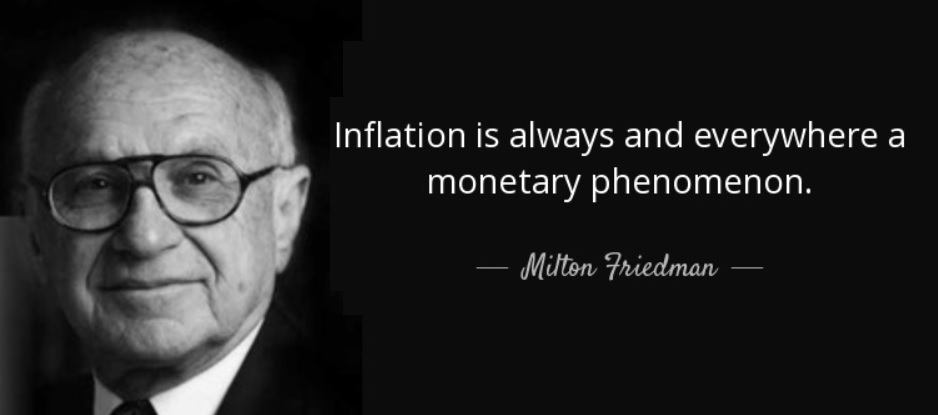Today’s column is about inflation and I want to start by recycling this clip from an interview back in April.
The main message is that the Federal Reserve deserves the blame for inflation.
America’s central bank created dramatically expanded its balance sheet starting in early 2020. This meant lots of extra liquidity sloshing around the economy and that inevitably led to rising prices.
and that inevitably led to rising prices.
As Milton Friedman explained, inflation is “always and everywhere on monetary phenomenon.”
So why am I regurgitating this type of analysis? Because someone sent me a PolitiFact article from April that supposedly does a “fact check” on the claim that Biden’s spending contributed to inflation.
What shocked me is that the article never mentions the Federal Reserve or monetary policy. I’m not joking.
We decided to look at how much of an impact Biden’s spending had on prices. …some economists, including Larry Summers, a top official under President Barack Obama, warned that the bill would lead to inflation. Fiscal conservatives joined in the warning. …How much of this can be put at Biden’s feet? Some, but not all of it, experts say. …The post-COVID-19 inflation story is more complicated than just federal spending.
Other forces, including changes in the labor market, rising global energy and commodity prices, supply chain dysfunction and the war in Ukraine have all contributed to higher prices. …Russia’s attack on Ukraine disrupted a world economy that was still sorting itself out after COVID. Sanctions aimed at cutting Russia’s energy revenues sent oil and gas prices soaring. The war’s crippling hit on Ukraine’s agricultural sector, combined with sanctions (Russia is a major wheat producer), has raised the prices of basic goods like wheat and sunflower oil. …none of the experts we reached, liberal and conservative, said Biden’s actions were responsible for all of the inflation. Past government spending, COVID’s disruptions to labor markets, energy prices and supply-chains also played significant roles. Most recently, the war in Ukraine has made a challenging situation worse.
This is nonsense. At the risk of being boring and wonky, the factors mentioned in the article are important, but they will only change relative prices in the absence of bad monetary policy.
In other words, energy prices may increase, but that will be offset by declines in other prices. Unless, of course, the central bank is creating too much liquidity, thus enabling an increase in the overall price level.
 I’ll close with a caveat. Bad monetary policy sometimes will cause rising asset prices (a bubble) rather than rising consumer prices. Both outcomes are examples of inflation, but only the latter shows up when the government releases monthly data on the consumer price index.
I’ll close with a caveat. Bad monetary policy sometimes will cause rising asset prices (a bubble) rather than rising consumer prices. Both outcomes are examples of inflation, but only the latter shows up when the government releases monthly data on the consumer price index.
That being said, is it possible that some of Biden’s (and Trump’s) spending policies led to more price inflation rather than more asset inflation?
Yes, but that’s merely shifting the deck chairs on the monetary Titanic. And it doesn’t change the fact that it is gross economic malpractice for PolitiFact to write about inflation without mentioning the Federal Reserve or monetary policy.
P.S. Here’s a humorous video about the Federal Reserve and here’s a serious tutorial video about the Federal Reserve.
No comments:
Post a Comment